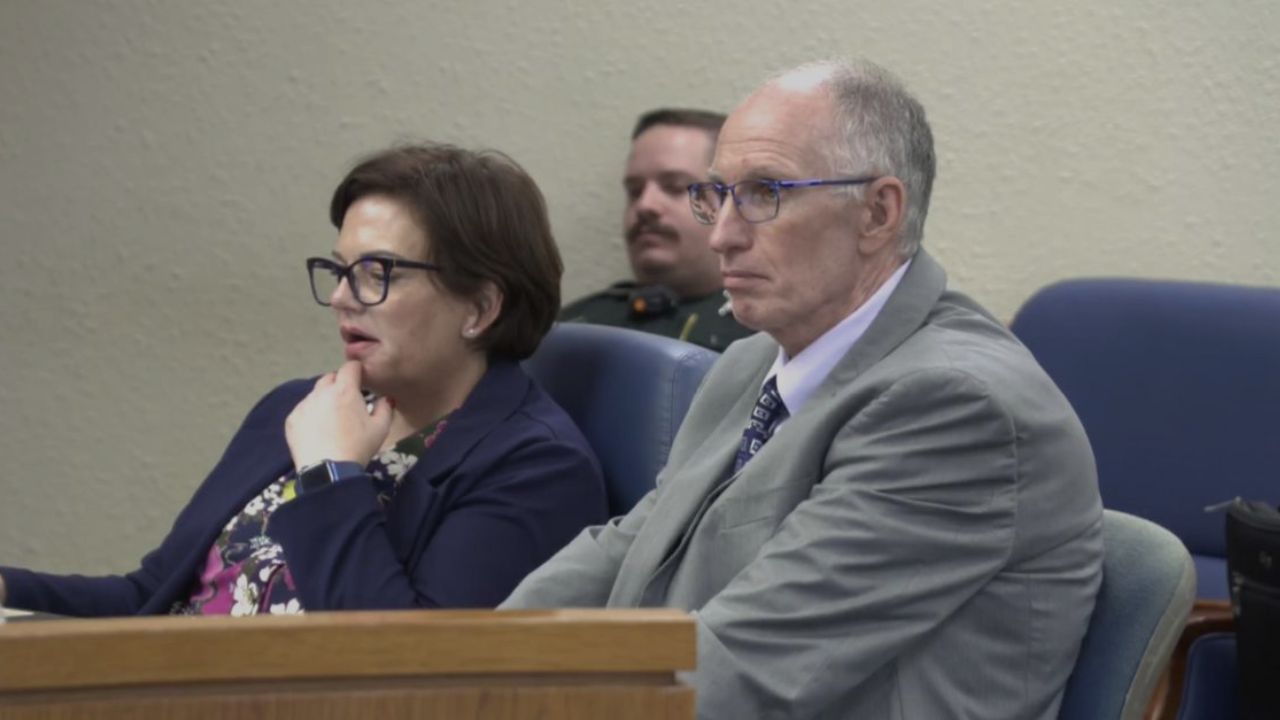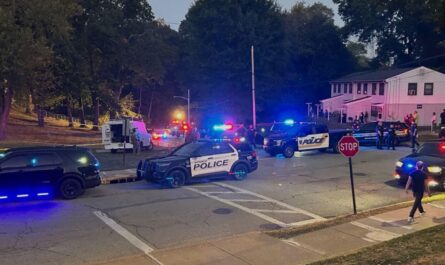Florida – A chilling murder trial unfolded this week involving Herbert Swilley, 55, who is accused of fatally overdosing his husband, Timothy Smith, with allergy medicine before strangling him in their home.
According to prosecutors, Swilley not only committed the brutal act but also staged the crime scene and shockingly launched a GoFundMe page to fund a “celebration of life” for Smith, adding a sinister layer to the case.
The unexpected allegations have captured widespread attention as opening statements revealed the details behind the tragic death on March 23, 2023. The prosecution laid out a narrative of a toxic marriage culminating in Swilley’s desperate and violent attempt to prevent Smith from leaving him.
Bitter Marriage and Motive Behind the Murder
Prosecutor Amy Beth Berndt described the tumultuous relationship between Swilley and Smith. While Smith was the primary breadwinner, Swilley depended financially on him and harbored growing resentment. Both men had struggled with alcohol and turned to Alcoholics Anonymous, but their problems intensified once sobriety began—with increased arguments and tension.
Smith had plans to move out of county to pursue a new job, igniting Swilley’s fury and precipitating the crime. Prosecutors highlighted these points:
- Swilley allegedly said, “If Tim thinks he’s leaving me…he’s got another thing coming.”
- He was reportedly “mad,” feeling cheated and believing Smith “owed him.”
- Swilley stood to gain from a $333,000 life insurance policy and a $48,000 retirement plan, for which he was the beneficiary.
- The murder date aligned suspiciously with Smith’s final job interview.
“He needed the easiest and quietest way to kill Smith, so he decided to drug him,” Berndt said. “That way, Tim couldn’t fight back.”
The Horrific Crime and Staged Crime Scene
Swilley allegedly gave Smith a massive dose of diphenhydramine—an antihistamine—causing Smith to pass out. Prosecutors detailed a brutal physical attack where Swilley beat and then strangled Smith so forcefully that he broke his neck. After the murder, Swilley moved the body to a second apartment the couple used for private encounters, planning to blame one of Smith’s sexual partners.
According to the prosecution:
- Swilley staged the crime scene to look like a murder during a date gone wrong.
- Swilley’s teenage daughter was at their home during the murder night; he instructed her to deny hearing anything.
- Swilley exhibited suspicious behavior at an Alcoholics Anonymous meeting, appearing nervous and fidgety.
“You didn’t hear anything. That’s all you need to remember,” he allegedly told his daughter when questioned.
Defense Seeks to Cast Doubt on Prosecution’s Claims
Swilley’s defense attorney, John Nicholas Klein, presented an alternate version of events. He described both men as “imperfect” and noted:
- Smith had stopped using a location tracking app to evade Swilley.
- Smith alone used the second apartment for sexual encounters, not Swilley.
- Neighbors reported high traffic at the apartment, including unknown men, some with criminal histories.
- Investigations allegedly overlooked other suspects who had been present.
- There was no concrete evidence placing Swilley at the second apartment on the night of the murder.
Read Also: Half-Nude Screaming Man Hijacks Ambulance in California After Fatal Stabbing
Klein argued that reasonable doubt exists given the lack of definitive proof tying Swilley exclusively to the crime scene, challenging the prosecution’s timeline and evidence.
Legal Status and Implications of the Case
Currently, Swilley faces a charge of first-degree premeditated murder. A previous charge of tampering with evidence was dropped, and the prosecution is not seeking the death penalty.
This trial highlights complex issues of domestic violence, financial motives, and evidentiary challenges in violent crimes. The defense and prosecution both await jury deliberations as the case continues.
For more detailed information, visit Law&Crime.
Public Reflections and Next Steps
This case opens a broader conversation surrounding domestic relationships marked by control, violence, and deception. It also raises awareness about the misuse of social platforms like GoFundMe in the wake of tragedy.
Key takeaways:
- The alleged use of an antihistamine for poisoning reveals new concerns about accessible substances as potential weapons.
- Financial incentives can exacerbate marital conflicts leading to tragic outcomes.
- Legal battles often involve complex narratives where evidence can be interpreted in multiple ways.
As the trial progresses, community members and legal observers await the final verdict to understand justice’s course in this deeply troubling case.
What do you think about this case? Have you ever encountered unexpected developments in criminal trials? Share your thoughts in the comments below!


 by
by 

